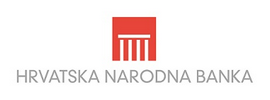Within the scope of financial accounts statistics[1], the Croatian National Bank publicly releases data on stocks of financial assets and liabilities of the entire economy and individual institutional sectors – non-financial corporations, households, general government and financial sector, in a certain period. Financial net worth of the economy or any part thereof is calculated as the difference between the stocks of its financial assets (e.g. loans and deposits granted, investments in securities and holdings) and the stocks of its financial liabilities (e.g. loans and deposits received, issued securities), with the total financial liabilities including debt liabilities, as well as the estimated financial worth of capital.
At the end of the fourth quarter of 2024, the financial assets of the Croatian economy stood at EUR 480bn (Figure 1), down by EUR 4.8bn in the quarter concerned and up by EUR 22.3bn in the period of one year. The financial liabilities of the Croatian economy stood at EUR 503bn, down by EUR 1.2bn in the quarter concerned and up by EUR 25.1bn in the period of one year. In terms of GDP, at the end of the fourth quarter of 2024, the financial assets of the Croatian economy amounted to 560% of the annual GDP, down by 17.2 percentage points in the quarter concerned and down by 25.6 percentage points in the period of one year. At the same time, the financial liabilities of the Croatian economy relative to GDP decreased by 13.6 percentage points in the quarter concerned and decreased by 24.7 percentage points in the period of one year, accounting for 587% of the annual GDP at the end of the fourth quarter of 2024. This continued the trend of decreasing assets and liabilities of the Croatian economy relative to GDP.
Figure 1 Financial assets and financial liabilities of the Croatian economy
At the end of the fourth quarter of 2024 (Figure 2), the total financial assets of households stood at EUR 106bn, up by 2.1% from the end of the previous quarter, and up by EUR 9.6bn or 10.0% in the period of one year. The financial liabilities of households went up and stood at EUR 28bn, which is an increase of 2.2% from the levels recorded at the end of the previous quarter. In the period of one year, the financial liabilities of households went up by EUR 2.7bn or 10.7%. As a result, the financial net worth of the households sector amounted to EUR 78.3bn or 2.1% more than at the end of the previous quarter (i.e. EUR 6.9bn or 9.7% more than at the end of the same quarter of the previous year). Thus, the net worth of the household sector continued the accelerated growth that began in the fourth quarter of 2022.
Figure 2 Financial assets and liabilities of the households sector[2]
At the end of the fourth quarter of 2024, the total financial assets of non-financial corporations stood at EUR 145bn (Figure 3), growing by 1.3% from the end of the previous quarter. The financial liabilities of non-financial corporations amounted to EUR 215bn or 1.1% more than at the end of the previous quarter. In line with such developments, the financial net worth of the non-financial corporations sector decreased to –EUR 70.4bn, down by –EUR 0.4bn from the end of the previous quarter.
Figure 3 Financial assets and liabilities of the non-financial corporations sector
Statistical time series: Financial accounts
-
Financial accounts statistics shows the indicators of stocks, transactions, valuation adjustments and other changes in financial assets and liabilities in the economy, classified by sectors and by financial instruments, on the basis of the currently available data sources. These include the CNB's monetary statistics and external statistics, statistical reports of the Croatian Financial Services Supervisory Agency, annual reports of non-financial corporations collected by the Financial Agency, reports on general government equity holdings in corporations by the Ministry of Finance of the Republic of Croatia, Ministry of Physical Planning, Construction and State Assets and Restructuring and Sale Centre, data on general government debt by the Ministry of Finance and the CNB, as well as the Zagreb Stock Exchange trading reports. ↑
-
Apart from households, the household sector also includes non-profit institutions serving household sector (associations of citizens, etc.). ↑
